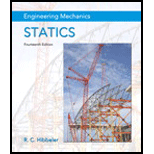
INTERNATIONAL EDITION---Engineering Mechanics: Statics, 14th edition (SI unit)
14th Edition
ISBN: 9780133918922
Author: Russell C. Hibbeler
Publisher: PEARSON
expand_more
expand_more
format_list_bulleted
Concept explainers
Textbook Question
Chapter 1.6, Problem 4P
(b) 350 lb/ft3 to kN/m3, (c) 8 ft/h to mm/s. Express the result to three significant figures. Use an appropriate prefix.
Expert Solution & Answer
Learn your wayIncludes step-by-step video

schedule08:29
Students have asked these similar questions
using excel how can we convert these two
9.81 m/s2 to ft/s2
i. 2000 kg/m3 to lbm/ft3
Please explain how to get mass (in lb/m) if given weight is 960 lb. Please show the proper conversion of units when dividing 960 lb by 32 ft/s2.
5. If 10 m3 of atmospheric air at zero degrees centigrade temperature are compressed to a volume of 1 m3 at 100oC, what will be the pressure of air in kPa? (3 DECIMALS IN FINAL ANSWER PLS)
Chapter 1 Solutions
INTERNATIONAL EDITION---Engineering Mechanics: Statics, 14th edition (SI unit)
Ch. 1.6 - What is the weight in newtons of an object that...Ch. 1.6 - Represent each of the following combinations of...Ch. 1.6 - Represent each of the following combinations of...Ch. 1.6 - (b) 350 lb/ft3 to kN/m3, (c) 8 ft/h to mm/s....Ch. 1.6 - Represent each of the following as a number...Ch. 1.6 - Round off the following numbers to three...Ch. 1.6 - Represent each of the following quantities in the...Ch. 1.6 - Represent each of the following combinations of...Ch. 1.6 - Represent each of the following combinations of...Ch. 1.6 - Represent each of the following combinations of...
Ch. 1.6 - Represent each of the following with SI units...Ch. 1.6 - Evaluate each of the following to three...Ch. 1.6 - Determine its density in SI units. Use an...Ch. 1.6 - (212 mN)2, (52 800 ms)2, and [548(105)]1/2 ms.Ch. 1.6 - is a dimensionality homogeneous equation which...Ch. 1.6 - To show this, convert 1 Pa = 1 N/m2 to lb/ft2....Ch. 1.6 - What is the density expressed in SI units? Express...Ch. 1.6 - Evaluate each of the following to three...Ch. 1.6 - If the density (mass/Volume) of concrete is 2.45...Ch. 1.6 - If the man is on the moon, where the acceleration...Ch. 1.6 - If they are 800 mm apart, determine the force of...
Additional Engineering Textbook Solutions
Find more solutions based on key concepts
The force in each member of truss and the state of members are in tension or compression.
Engineering Mechanics: Statics & Dynamics (14th Edition)
The sign has a mass of 100 kg with center of mass at G. Determine the x, y, z components of reaction at the bal...
Statics and Mechanics of Materials (5th Edition)
Comprehension Check 7-1
Express the following values using an appropriate Sl prefix such that there are only on...
Thinking Like an Engineer: An Active Learning Approach (4th Edition)
What parts are included in the vehicle chassis?
Automotive Technology: Principles, Diagnosis, And Service (6th Edition) (halderman Automotive Series)
What parts are included in the vehicle chassis?
Automotive Technology: Principles, Diagnosis, and Service (5th Edition)
Water flows through the turbine shown in Fig. 7.28, at a rate of 3400 gal/min when the pressure at A is 21.4 ps...
Applied Fluid Mechanics (7th Edition)
Knowledge Booster
Learn more about
Need a deep-dive on the concept behind this application? Look no further. Learn more about this topic, mechanical-engineering and related others by exploring similar questions and additional content below.Similar questions
- 1- In a manometer containing water, the differential pressure (ΔP) is read as equal to 1 in 20 atmospheric pressure. Accordingly, how many meters is the water height in the manometer?arrow_forwardWhat is, in MW, the power generated by a turbine that has a power coefficient equal to 0.24 when the wind speed is 10.3 m/s and the blades have a length of 34 m? Round off your answer to 2 decimal places and do not include the unit.arrow_forwardExpress the quantity 254,998 m in each unit: ___ km, ____ mm, ____ cm.arrow_forward
- Express the quantity 254,998m in Km.arrow_forwardAn engineer designing a light aircraft is trying to make an estimate of the diameter of the propeller needed. The design speed of the aircraft is 69m/s into still air and at this speed experience allows the engineer to assume a propeller efficiency of 88%. Other analysis shows that a thrust of 10906N must be supplied by the propeller to maintain this speed. Assuming a constant air density of 1.19 kg/m3 , determine the diameter of the ideal propeller in m to 1 decimal place.arrow_forwardA 1 m3 tank contains 4.55 kg of nitrogen at a temperature 375 K. Determine the pressure in kPa. Report your answer to one decimal place.arrow_forward
- If 2 liters of cream with a density 1010 kg/m3 is turned to 5 liters of whipped cream. What is the specific gravity and specific weight of the whipped cream?arrow_forwardAn airplane weighing 20,950.1 lb, at ground is flying at an altitude of 32,557.43 ft at 543 miles per hour. Determine the change in potential energy in hp-min. answer must be in 3 decimalsarrow_forwardIf under standard conditions a certain gas weighs 0.14 lb/ft3, then its corresponding specific volume, expressed in terms of cubic feet per slug (ft3 /slug), must bearrow_forward
arrow_back_ios
SEE MORE QUESTIONS
arrow_forward_ios
Recommended textbooks for you
 Elements Of ElectromagneticsMechanical EngineeringISBN:9780190698614Author:Sadiku, Matthew N. O.Publisher:Oxford University Press
Elements Of ElectromagneticsMechanical EngineeringISBN:9780190698614Author:Sadiku, Matthew N. O.Publisher:Oxford University Press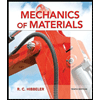 Mechanics of Materials (10th Edition)Mechanical EngineeringISBN:9780134319650Author:Russell C. HibbelerPublisher:PEARSON
Mechanics of Materials (10th Edition)Mechanical EngineeringISBN:9780134319650Author:Russell C. HibbelerPublisher:PEARSON Thermodynamics: An Engineering ApproachMechanical EngineeringISBN:9781259822674Author:Yunus A. Cengel Dr., Michael A. BolesPublisher:McGraw-Hill Education
Thermodynamics: An Engineering ApproachMechanical EngineeringISBN:9781259822674Author:Yunus A. Cengel Dr., Michael A. BolesPublisher:McGraw-Hill Education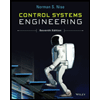 Control Systems EngineeringMechanical EngineeringISBN:9781118170519Author:Norman S. NisePublisher:WILEY
Control Systems EngineeringMechanical EngineeringISBN:9781118170519Author:Norman S. NisePublisher:WILEY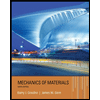 Mechanics of Materials (MindTap Course List)Mechanical EngineeringISBN:9781337093347Author:Barry J. Goodno, James M. GerePublisher:Cengage Learning
Mechanics of Materials (MindTap Course List)Mechanical EngineeringISBN:9781337093347Author:Barry J. Goodno, James M. GerePublisher:Cengage Learning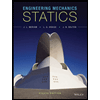 Engineering Mechanics: StaticsMechanical EngineeringISBN:9781118807330Author:James L. Meriam, L. G. Kraige, J. N. BoltonPublisher:WILEY
Engineering Mechanics: StaticsMechanical EngineeringISBN:9781118807330Author:James L. Meriam, L. G. Kraige, J. N. BoltonPublisher:WILEY

Elements Of Electromagnetics
Mechanical Engineering
ISBN:9780190698614
Author:Sadiku, Matthew N. O.
Publisher:Oxford University Press

Mechanics of Materials (10th Edition)
Mechanical Engineering
ISBN:9780134319650
Author:Russell C. Hibbeler
Publisher:PEARSON

Thermodynamics: An Engineering Approach
Mechanical Engineering
ISBN:9781259822674
Author:Yunus A. Cengel Dr., Michael A. Boles
Publisher:McGraw-Hill Education

Control Systems Engineering
Mechanical Engineering
ISBN:9781118170519
Author:Norman S. Nise
Publisher:WILEY

Mechanics of Materials (MindTap Course List)
Mechanical Engineering
ISBN:9781337093347
Author:Barry J. Goodno, James M. Gere
Publisher:Cengage Learning

Engineering Mechanics: Statics
Mechanical Engineering
ISBN:9781118807330
Author:James L. Meriam, L. G. Kraige, J. N. Bolton
Publisher:WILEY
Introduction To Engg Mechanics - Newton's Laws of motion - Kinetics - Kinematics; Author: EzEd Channel;https://www.youtube.com/watch?v=ksmsp9OzAsI;License: Standard YouTube License, CC-BY